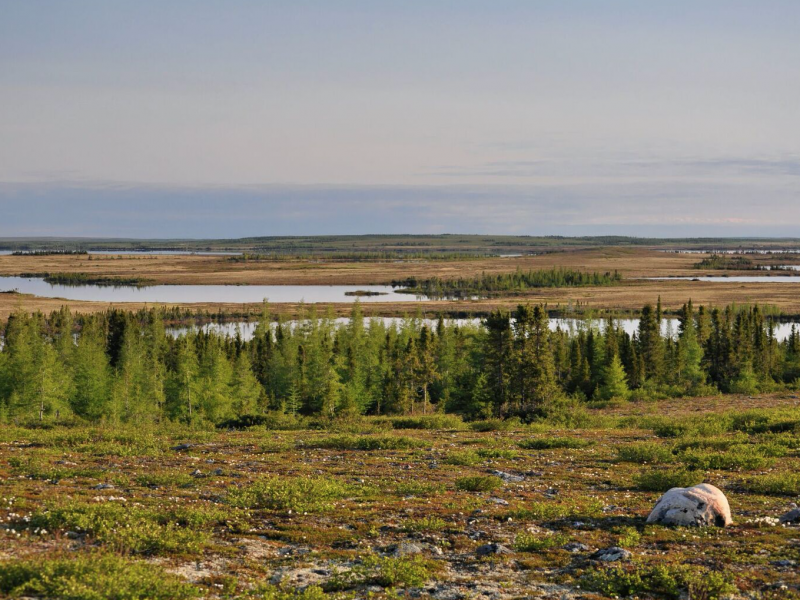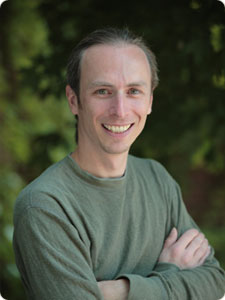New Study Advances the Science of Arctic Climate Warming
By Rebecca GoldfineIn newly published research, Bowdoin's Phil Camill and a team of researchers say they've come up with a more accurate and powerful method for assessing the amount of carbon stored in Earth's northern permafrost.

The scholars' work will also open the door to future studies that can predict the fate of this carbon and how it might influence the trajectory of global warming, Camill says.
It's critically important to know how much carbon is contained in the cold lands of the North, because as Earth heats up, this ground will likely thaw and release large quantities of carbon dioxide, a potent greenhouse gas.
Currently, most of the Arctic's carbon is secured underground in the form of frozen, ancient plant matter. But as temperatures warm, decomposition of these carbon-rich soils will quicken, contributing to and hastening climate change.
In a paper published Wednesday in Science Advances, Camill and his collaborators explain how they provided an updated and more detailed inventory of soil carbon stocks. Their method confirmed that approximately 1,000 gigatons of carbon are stored in permafrost—roughly 1.3 times the amount of carbon currently in the atmosphere.

“So we have a big frozen carbon pool that could be mobilized into the atmosphere if it thaws and warms,” Camill said.
For the past two decades, scientists have been trying to solve the puzzle of how much carbon is stocked away in permafrost (which is ground that has been frozen for two or more consecutive years). With each new advance they have made, their estimates have increased.
“The numbers have been going up, and that raises the stakes in terms of the amount of carbon that could potentially be released in a climate-warming scenario,” Camill said.
Getting a good read on the situation has been a challenge. Permafrost covers 25 percent of the northern hemisphere—approximately nine million square miles—so scientists can't get to every part of it to extract soil samples. It's also impossible to scan for carbon in soil with remote sensing equipment. Instead, they have taken soil cores in selected sites and then estimated the abundance and distribution of soil carbon at other locations based on variables that correlate with it.
This approach mostly relied on two variables: soil type and vegetation type. “Using this technique, scientists have extrapolated spatial estimates of soil carbon around the world,” Camill said. “That's where the soil permafrost carbon research community has been until recently.”
The innovation made by the scientists in the new study was to incorporate a greater number and variety of environmental factors into their model. “Rather than look at just soil type and vegetation type, we looked at many variables,” including precipitation, temperature, soil moisture, bedrock geology, and elevation.
“It is much more exhaustive, and now we have a way of predicting soil carbon that is more powerful and accurate,” he added.
Additionally, the new study will equip scientists with a more finely tuned ability to forecast climate change in the coming decades and centuries. By linking soil carbon to environmental variables, Camill said, “We now have a statistical model of what is controlling soil carbon that we can connect to climate models. So, down the road, we may be able to use climate models to help us figure out how soil carbon storage will change with climate change.”
“For example,” he continued, “if climate change warms, wets, or dries Arctic permafrost soils, these soils will shift to conditions that store less carbon than today. That likely means more carbon release to the atmosphere and faster warming.”



